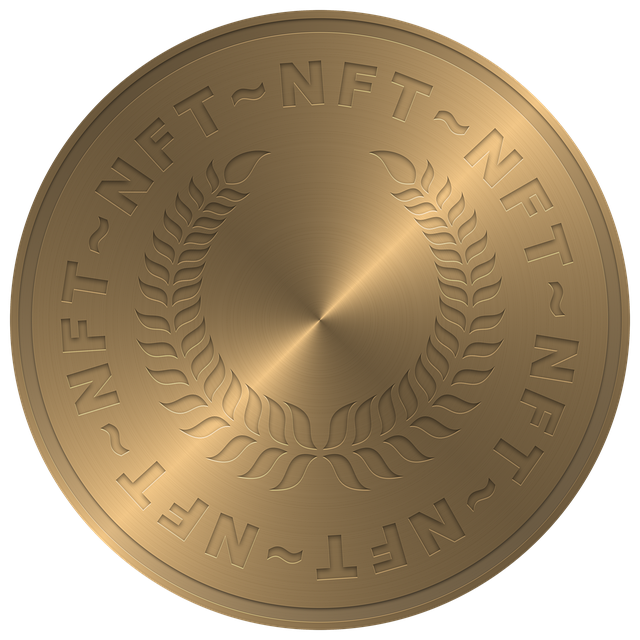Is Crypto Trading Profitable in 2025?
Author: Jameson Richman Expert
Published On: 2025-11-01
Prepared by Jameson Richman and our team of experts with over a decade of experience in cryptocurrency and digital asset analysis. Learn more about us.
Is crypto trading profitable is one of the most searched questions for both new and experienced investors in 2025. This article evaluates profitability realistically — covering factors that determine returns, common strategies, fees, taxes, tools (including signal services), exchanges, case studies, and practical steps to increase your chance of profit while managing risk. Read on for data-driven guidance, actionable strategies, and trustworthy resources to decide whether and how crypto trading can be profitable for you.

Quick answer: Can crypto trading be profitable?
Short answer: yes — crypto trading can be profitable, but profitability is neither guaranteed nor evenly distributed. Profit depends on market conditions, strategy, execution, risk management, fees, and psychological discipline. Traders who prepare, adapt, and use robust tools (including reliable signals and top-tier exchanges) increase their chances of consistent returns over time.
Why profitability varies: core determinants
Understanding what affects profitability will help you evaluate whether crypto trading fits your goals and risk tolerance.
- Market volatility: Crypto markets are more volatile than most traditional assets. Higher volatility means larger profit opportunities but also larger drawdowns and risk of loss.
- Time horizon: Day traders rely on short-term price moves; swing traders hold for days to weeks; position traders and investors hold for months to years. Each horizon has different return distributions and risk profiles.
- Strategy and edge: Profitability stems from an edge — a repeatable method that produces positive expected value. Edges include technical strategies, arbitrage, market-making, fundamental research, and using high-quality signals.
- Risk management: Position sizing, stop losses, diversification, and leverage control are critical. Without them, even high-win-rate strategies can fail.
- Costs and slippage: Exchange fees, spreads, funding rates, and slippage reduce net returns; active traders must optimize execution and choose exchanges with favorable fee structures.
- Psychology and discipline: Emotional control, consistency, and the ability to follow a plan matter more than any single indicator.
- Tax and regulatory environment: Taxes reduce net returns; compliance and jurisdiction can affect which strategies or instruments are available.
How to measure profitability
Clear metrics help evaluate whether trading is working:
- Return on investment (ROI): Total profits (minus fees and taxes) divided by capital invested over a period.
- Annualized return: Converts periodic returns to an annual rate for easier comparison with benchmarks.
- Sharpe ratio: Risk-adjusted return metric (returns minus risk-free rate divided by volatility).
- Win rate and risk-reward ratio: How often trades win and the average payoff relative to losses.
- Max drawdown: Largest peak-to-trough loss — shows capital risk and psychological resilience requirements.

Realistic return expectations
Expectations must be grounded in reality. Consider these broad guidelines (illustrative, not guaranteed):
- Beginner traders: Many beginners lose money initially. With education and discipline, breakeven to modest positive returns (0–20% annually) in the first 1–2 years is a reasonable early objective.
- Consistent retail traders: Experienced retail traders who follow sound risk management often target 20–100% annual returns, but those results vary widely and involve significant volatility.
- Professional traders and funds: Some hedge funds and prop desks produce double-digit returns with lower volatility due to sophisticated strategies, capital, and technology — but they face intense competition and regulatory scrutiny.
- High-risk, high-reward traders: Leverage and margin can amplify returns and losses. While highly leveraged traders can report spectacular returns, they also face high liquidation risk.
Common profitable strategies (and their trade-offs)
Below are widely used strategies with practical notes on profitability and risk.
1. Trend following
Buy assets in an uptrend and sell on trend reversal. Works well in strong directional markets. Requires discipline to cut losses and let winners run.
2. Swing trading
Captures intermediate moves (days to weeks). Relies on technical indicators (moving averages, RSI, MACD). Lower time commitment than day trading but still active.
3. Day trading / scalping
Frequent short-term trades aiming for small profits per trade. Requires fast execution, low fees, and strong emotional control. Profitable for some, but fees and slippage make it challenging for many.
4. Arbitrage
Exploits price differences between exchanges or products. Low risk when executed well; requires speed, capital, and cross-exchange access.
5. Market making
Providing liquidity via simultaneous buy/sell orders to capture spreads. Requires capital, advanced systems, and risk controls.
6. Fundamental investing
Investing in projects with strong fundamentals for long-term appreciation. More like investing than trading; profitability depends on project selection and long-term adoption.
7. Automated trading / bots
Bots can execute strategies 24/7, removing some emotional errors. Profitability depends on strategy quality, backtesting, and continuous monitoring.
Use of crypto trading signals: Do they improve profitability?
Signals can help traders by sourcing trade ideas, entry/exit prices, and risk parameters. However, not all signal services are equal. Profitable use requires vetting and integrating signals into a broader trading plan.
- Free signal resources can be useful for learning and idea generation — see a comprehensive free guide to signals here: Free crypto trading signals guide (detailed primer).
- Paid signal groups often claim high win rates; verify historical performance, transparency, and independent track records before trusting them with capital.
- Combining signals with technical confirmation and proper position sizing reduces blind reliance and improves long-term profitability.
- For traders seeking vetted signal communities with proven methodologies, consult curated reviews like the ultimate guide to the best cryptocurrency signals groups.

Exchanges matter: picking the right platform
Exchange selection influences fees, liquidity, available assets, and security — all of which affect net profitability. Leading exchanges offer low spreads, deep liquidity, and modern risk-management tools.
Before choosing, evaluate:
- Fees (maker/taker) and fee tiers
- Liquidity for the assets you want to trade
- Security track record and custody options
- Regulatory compliance and withdrawal controls
- Available order types (limit, stop-limit, OCO, etc.)
- Availability in your country and deposit/withdrawal methods
If you want to explore major exchanges, you can register using the links below (affiliate links provided by the platforms):
- Register on Binance — large liquidity and broad asset coverage. For a deep feature and security review, see this expert analysis: Is Binance the best crypto exchange in 2025?
- Register on MEXC — known for a wide token selection and competitive fees.
- Register on Bitget — features copy trading and derivatives tools.
- Register on Bybit — popular for derivatives and competitive fee structure.
Fees, slippage, and funding: the hidden profitability killers
High trading frequency magnifies the impact of fees and slippage. Consider:
- Taker vs maker fees: Market orders (taker) usually pay higher fees; using limit orders (maker) can reduce costs.
- Funding rates: On perpetual futures, funding payments can erode profits if positions are held long-term.
- Withdrawal and fiat on/off ramps: Deposits and withdrawals may carry fees or slow processing that affect trade timing.
Always calculate net profit after these costs to avoid inflated expectations.
Taxes and reporting
Taxation can materially lower net profits. Crypto tax rules vary by country — some jurisdictions tax realized gains as capital gains, others treat frequent trading as business income. To avoid unpleasant surprises:
- Maintain detailed records of trades, deposits, and withdrawals.
- Use tax software or consult a tax professional experienced in cryptocurrency.
- In the U.S., refer to the official IRS guidance on virtual currencies: IRS FAQ on virtual currency.

Risk management: how profitable traders protect capital
Protection of capital is the cornerstone of long-term profitability. Key practices include:
- Position sizing: Risk a fixed small percentage of your capital per trade (commonly 1–3%).
- Stop-loss discipline: Use stop-loss orders to limit downside; avoid moving stops out of fear.
- Risk-reward planning: Target trades where potential upside is at least 2–3x the potential loss.
- Diversification: Don’t overconcentrate in a single token or correlated positions.
- Stress testing: Model tail events and ensure you can survive extended drawdowns.
Tools and research that improve profitability
Successful traders leverage tools to gain an edge:
- Charting platforms: TradingView and exchange-native charts for technical analysis.
- Data and on-chain analytics: Services like Glassnode, Coin Metrics, and Santiment provide on-chain signals and macro indicators.
- Signal services and communities: Vet and integrate signals — learn more about top signal groups in this comprehensive guide: best cryptocurrency signals groups.
- Automated execution: APIs, bots, and copy-trading platforms can improve speed and consistency.
- Backtesting frameworks: Test strategies on historical data before risking capital.
Case studies: examples of profitability scenarios
Below are simplified examples to show how strategy, discipline, and costs change outcomes.
Case A: Trend follower — long-term success
Assumptions:
- Starting capital: $50,000
- Annualized return: 40%
- Max drawdown: 25%
- Fees & slippage: 1% annually
Annual net return (approx): 40% - 1% = 39% → Year 1: $50k * 1.39 = $69,500
Outcome: Over several years, compounding leads to strong growth, but the trader must withstand drawdowns and remain disciplined when volatile pullbacks occur.
Case B: High-frequency day trader — marginal net returns
Assumptions:
- Starting capital: $50,000
- Gross daily returns: 0.15% (compounding)
- Annualized (before costs): ~43%
- Fees, spreads, slippage: 30% of gross returns
Net annual return (approx): 43% * (1 - 0.30) = 30% → after taxes and risk of occasional large losses, actual results may vary greatly.
Outcome: Requires excellent execution, low fees, and psychological resilience. Slippage and sudden market moves can wipe profits.
Case C: Leverage gone wrong
Assumptions:
- Starting capital: $10,000
- Uses 10x leverage on a futures trade
- Market moves 10% against position → liquidation
Outcome: Entire capital lost. Leverage can magnify profits but also quickly eliminate capital. Conservative leverage or no leverage is safer for most traders.

Common mistakes that destroy profitability
- Overleverage and oversized positions.
- Ignoring fees and slippage in performance calculations.
- Chasing past winners or entering late into momentum moves without a plan.
- Lack of record keeping and failure to review losing trades for lessons.
- Failing to adapt to changing market regimes (e.g., bull vs bear markets).
How to increase your chance of being profitable
Actionable steps to tilt the odds in your favor:
- Education first: Learn technical analysis, risk management, and the specifics of crypto markets. Use credible sources like Investopedia for basics: Investopedia — Cryptocurrency.
- Paper trade and backtest: Validate strategies with historical data and demo accounts before risking real capital.
- Start small: Scale up position sizes as you prove the strategy in live conditions.
- Use stop losses and position sizing: Consistent risk per trade prevents catastrophic loss.
- Keep a trading journal: Record setup, rationale, outcome, and lessons for each trade.
- Blend methods: Use signals as idea generators but confirm with your technical or fundamental filters. See free and paid signal resources linked earlier to compare quality.
- Choose the right exchanges: Low fees, high liquidity, and strong security are vital. Read exchange reviews and use trusted platforms (links above).
- Continuous improvement: Markets evolve. Regularly refine strategies and risk controls.
Regulation, security, and long-term sustainability
In 2025, regulatory scrutiny continues to increase. Better-regulated exchanges and services reduce counterparty risk but may limit certain products. Security practices such as hardware wallets, multi-factor authentication, and withdrawal whitelists protect capital.
For balanced research into the nature of cryptocurrency and its evolution, consult the general overview on Cryptocurrency — Wikipedia.

Is crypto trading profitable for beginners vs professionals?
Beginners often face a steeper learning curve and higher initial failure rates. Professionals benefit from capital, technology, team support, and institutional-grade risk controls. That said, disciplined retail traders who commit to learning, use the right tools (signals, research, exchanges) and practice strict risk management can achieve profitability over time.
Where trading signals and communities fit in your plan
Signals can accelerate learning and provide vetted trade setups. But they should not replace education. When evaluating a signal or community:
- Ask for verified historical performance and transparency.
- Test signals in a demo account or with small positions first.
- Prefer services that provide rationale, risk parameters, and updates.
- Balance paid signal costs against expected benefit — a high-cost service must materially improve returns to be worthwhile.
To explore top signal groups and learn how to integrate them with a trading plan, see this curated resource: Best cryptocurrency signals groups, and for free educational signal guides refer to free crypto trading signals guide.
Is Binance the right exchange for profitability in 2025?
Binance remains one of the largest exchanges by volume, offering deep liquidity and a wide product suite. Whether it helps your profitability depends on your needs (spot vs derivatives, fiat access, local regulation). For an in-depth discussion of Binance’s features, security, regulation, and market position, read this expert review: Is Binance the best crypto exchange in 2025?

Checklist before you start trading
Use this quick checklist to prepare:
- Learn basics of crypto mechanics and markets.
- Choose a strategy and backtest it.
- Open accounts on reputable exchanges with good fee structures (links above).
- Set up strong account security (2FA, withdrawal whitelist).
- Define risk per trade and maximum portfolio drawdown limits.
- Start with small positions and scale only after consistent success.
- Keep records and review performance monthly.
FAQs — concise answers
Q: How much money do I need to start trading profitably?
A: You can start with a few hundred dollars to learn, but meaningful, diversified trading strategies typically require several thousand to be effective while keeping position sizes reasonable and costs manageable.
Q: Can I make a living trading crypto?
A: Some traders do, but it’s difficult and requires consistent positive returns, rigorous risk management, and often several years of experience. Treat early trading as learning rather than immediate income generation.
Q: Are trading bots profitable?
A: Bots can be profitable if they implement a robust strategy, are well-tested, and monitored. They remove emotional errors but need maintenance and adaptation to changing market regimes.
Q: Should I use leverage?
A: Use leverage cautiously. It magnifies both gains and losses. Conservative traders avoid high leverage; professionals use strict risk controls and automated liquidation protection.
Final verdict: is crypto trading profitable?
Crypto trading can be profitable in 2025, but it is not a guaranteed path to wealth. Profitability hinges on skill, discipline, risk management, tools, and the chosen trading environment. New traders should prioritize education, backtesting, and careful exposure. Experienced traders should optimize execution, control costs, and continuously refine strategies.
If you decide to pursue trading, use reliable exchanges and vetted signal groups, test strategies thoroughly, and always manage risk. For curated resources on signal groups and implementation, explore the guides linked earlier:
- Ultimate guide to the best cryptocurrency signals groups
- Free crypto trading signals ultimate guide
- Expert review: Is Binance the best exchange in 2025?
Ready to start? Consider registering on reputable exchanges with the links below to access liquidity and tools that support profitable trading (affiliate links):
Additional reputable reading:
Profitability in crypto trading is achievable but requires realistic expectations, disciplined execution, continuous learning, and careful risk control. Use the resources and checklists above to build a structured plan and increase your odds of long-term success.